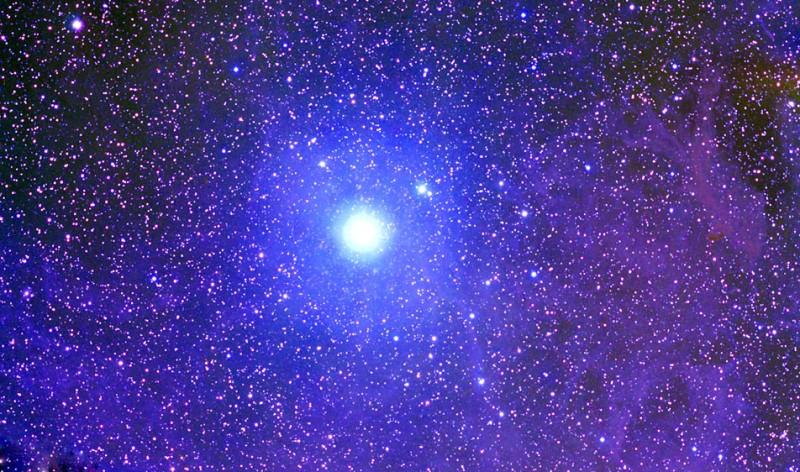JANUARY 11, 2008
Polaris Dust Nebula
EXPLANATION
Centered on North Star Polaris, this 4 degree wide field of view covers part of a complex of relatively unfamiliar, diffuse dust clouds soaring high above the plane of our Milky Way Galaxy. The combined light of the Milky Way stars are reflected by the dusty, galactic cirrus, the reflected starlight having the same blue tint characteristic of better known reflection nebulae. But this deep color image also records a faint reddish luminescence from the dust grains as they convert invisible stellar ultraviolet radiation to visible red light. Dubbed extended red emission, the dim cosmic glow is thought to be caused by complex organic molecules known as PAHs (polycyclic aromatic hydrocarbons), common constituents of interstellar dust. On planet Earth, PAHs are widely encountered as the sooty products of combustion.
Image Credit & Copyright
Steve Mandel
(Hidden Valley Observatory)
Research Collaboration: Adolf Witt
(University
of Toledo) et al.


